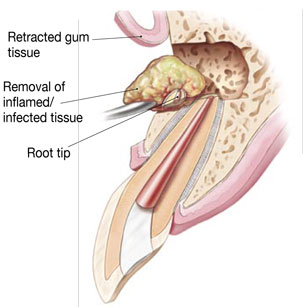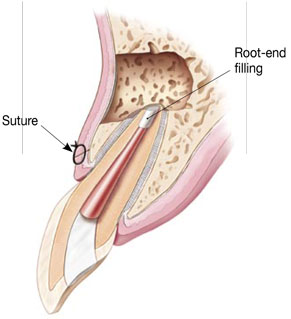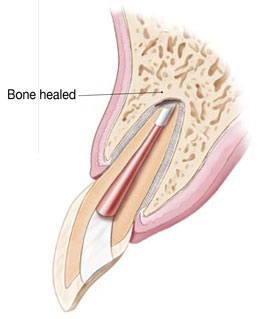Although there are many surgical procedures that can be performed to save a tooth, the most common is called apicoectomy or root-end resection. When inflammation or infection persists in the bony area around the end of your tooth after a root canal procedure, your endodontist may have to perform an apicoectomy.


A small filling may be placed in the root to seal the end of the root canal and a few stitches or sutures are placed in the gingiva to help the tissue heal properly.

Over a period of months, the bone heals around the end of the root.

Your endodontist will give you specific post operative instructions to follow. If you have questions after your procedure, or if you have pain that does not respond to medication, contact your endodontist.
No matter how effective modern artificial tooth replacements are – and they can be very effective – nothing is as good as a natural tooth. You have already made an investment in saving your tooth. The pay-off for choosing endodontic surgery could be a healthy, functioning, natural tooth for the rest of your life.
